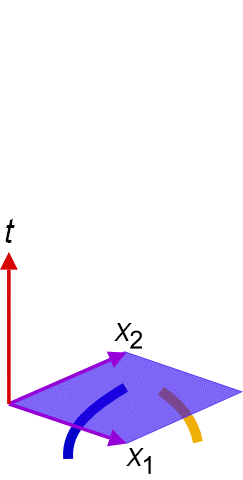 | ||
In quantum mechanics, the exchange operator
Contents
Construction
In three or higher dimensions, the exchange operator can represent a literal exchange of the positions of the pair of particles by motion of the particles in an adiabatic process, with all other particles held fixed. Such motion is often not carried out in practice. Rather, the operation is treated as a "what if" similar to a parity inversion or time reversal operation. Consider two repeated operations of such a particle exchange:
Therefore,
Both signs are realized in nature. Particles satisfying the case of +1 are called bosons, and particles satisfying the case of −1 are called fermions. The spin–statistics theorem dictates that all particles with integer spin are bosons whereas all particles with half-integer spin are fermions.
The exchange operator commutes with the Hamiltonian and is therefore a conserved quantity. Therefore, it is always possible and usually most convenient to choose a basis in which the states are eigenstates of the exchange operator. Such a state is either completely symmetric under exchange of all identical bosons or completely antisymmetric under exchange of all identical fermions of the system. To do so for fermions, for example, the antisymmetrizer builds such a completely antisymmetric state.
In 2 dimensions, the adiabatic exchange of particles is not necessarily possible. Instead, the eigenvalues of the exchange operator may be complex phase factors (in which case
Quantum chemistry
A modified exchange operator is defined in the Hartree–Fock method of quantum chemistry, in order to estimate the exchange energy arising from the exchange statistics described above. In this method, one often defines an energetic exchange operator as:
where
